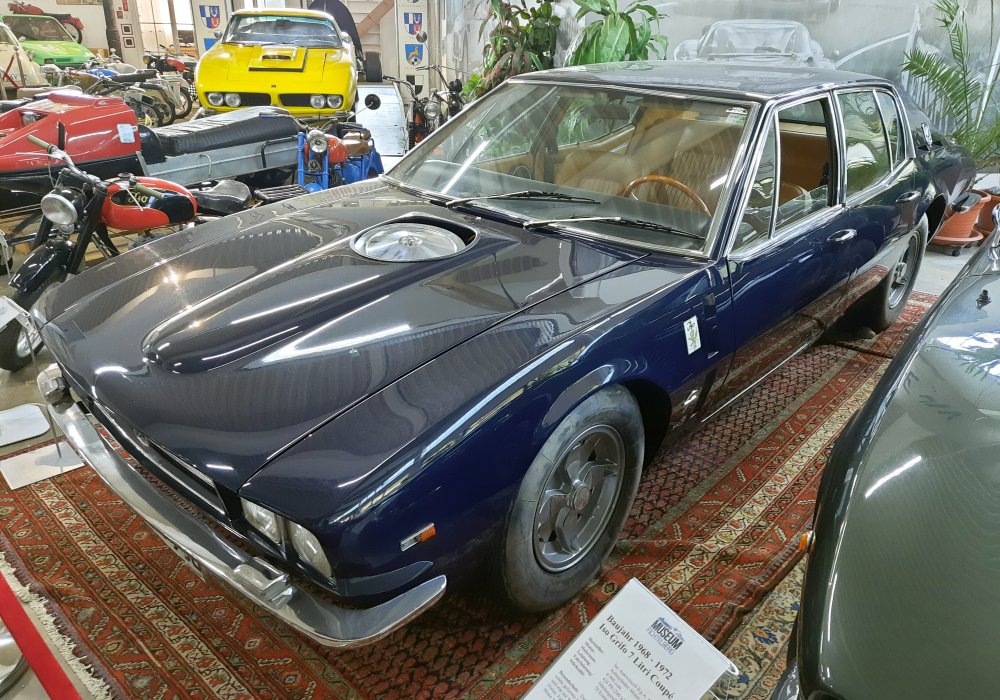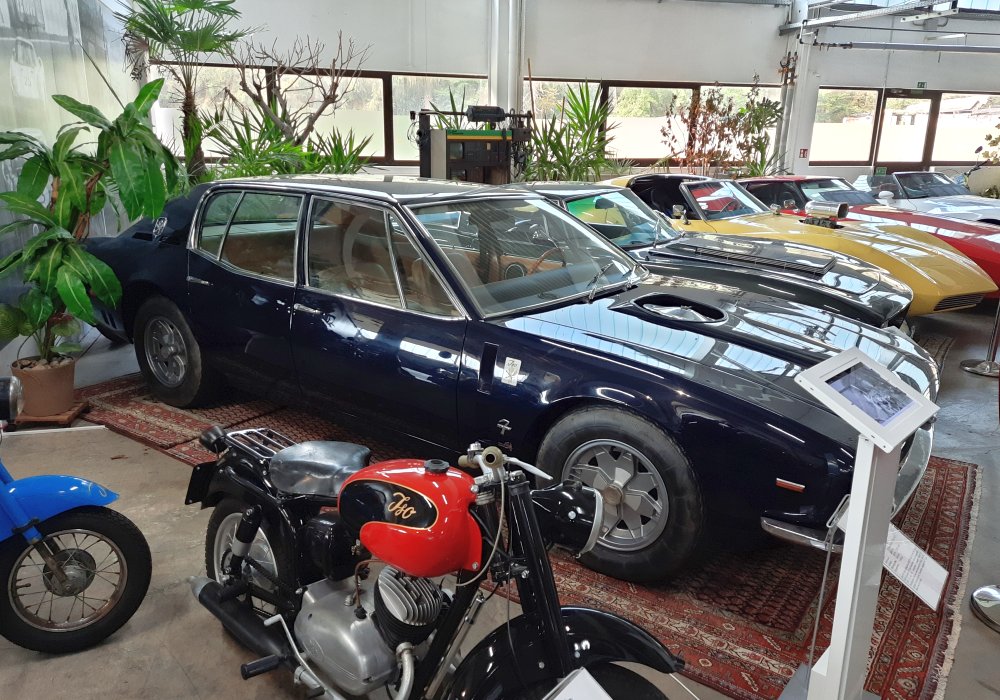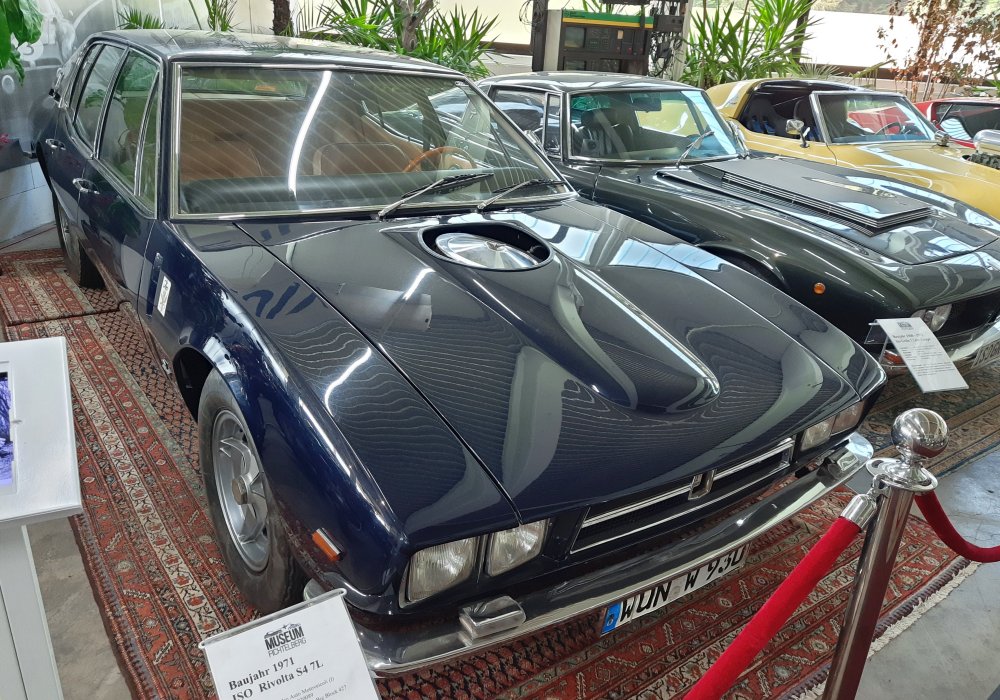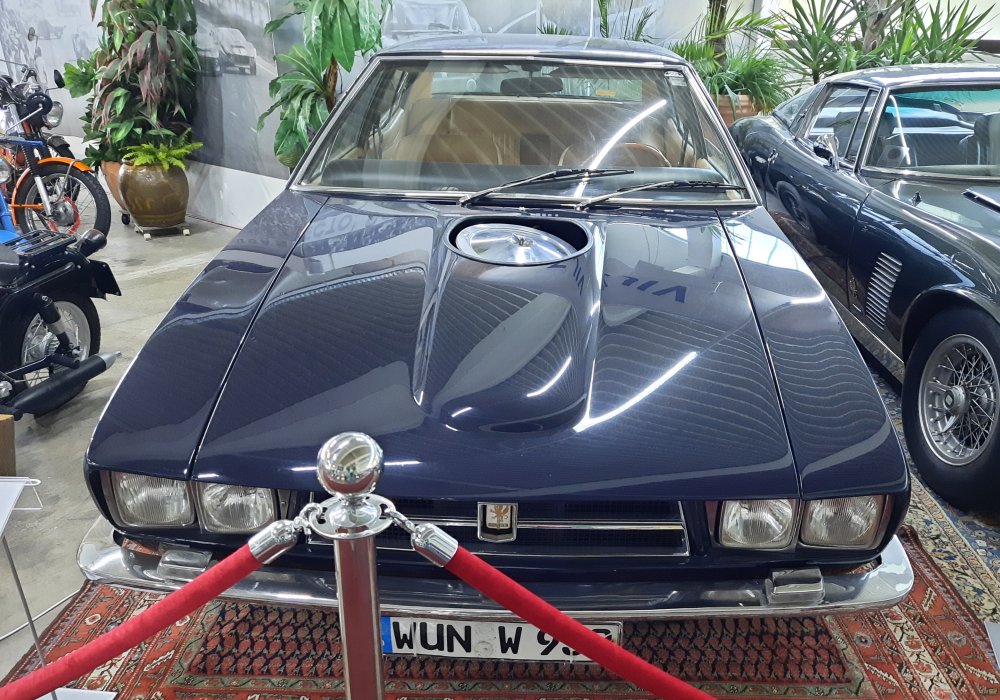Description
The ISO Rivolta S4 Fidia 7 Litri was the most powerful and exclusive evolution of ISO’s refined four-door grand tourer — a machine that took the already formidable Fidia concept and infused it with the thunderous heart of the ISO Grifo 7 Litri. Built in exceedingly small numbers between 1969 and 1971, the 7 Litri version transformed the world’s fastest four-seater into something even more extraordinary: a luxury saloon capable of supercar performance. With its elegant Giorgetto Giugiaro design, Giotto Bizzarrini chassis, and the 7.0-litre Chevrolet big-block V8 beneath its long bonnet, the Fidia 7 Litri embodied everything ISO Rivolta stood for — engineering integrity, Italian craftsmanship, and the intoxicating fusion of grace and power.
The Fidia had debuted in 1967 as the ISO S4 Fidia 300, a four-door gran turismo that defied convention by combining the comfort of a limousine with the performance of a GT coupé. It quickly earned the title “le quattro poltrone più veloci del mondo” — “the fastest four seats in the world.” But by 1969, the same customers who had fallen in love with the ISO Grifo 7 Litri — businessmen, racing drivers, and aristocrats who wanted their cars to be as fast as they were stylish — began asking for the same immense power in a four-door format. Piero Rivolta and his engineers listened, and the result was the Fidia 7 Litri, a car that redefined what a grand touring saloon could be.
At its core, the Fidia 7 Litri shared the same Chevrolet 427 cubic inch (7.0-litre) big-block V8 as the Grifo 7 Litri. In road trim, this engine produced around 400 horsepower and an immense 460 lb-ft of torque, driving the rear wheels through either a four-speed manual ZF gearbox or a GM Turbo-Hydramatic automatic transmission. The numbers were staggering for a car of its size and luxury: 0–100 km/h (62 mph) in around 6 seconds, and a top speed exceeding 250 km/h (155 mph). Even by modern standards, those figures are impressive; in 1969, they were astonishing. The Fidia 7 Litri wasn’t just fast for a saloon — it was one of the fastest cars in the world.
To handle such prodigious power, the car’s chassis was strengthened and refined. It retained ISO’s hallmark pressed-steel monocoque structure with a tubular front subframe — a combination that provided outstanding rigidity and balance. The front suspension used unequal-length wishbones with coil springs and telescopic dampers, while the rear featured ISO’s sophisticated de Dion axle with twin trailing arms, a Watts linkage, and inboard rear disc brakes to reduce unsprung weight. Four-wheel ventilated discs and servo assistance provided immense stopping power, and power steering was fitted as standard. The result was a car that, despite its size and power, felt composed, predictable, and effortlessly stable at high speeds.
Externally, the Fidia 7 Litri retained the timeless lines of Giugiaro’s original design for Ghia — elegant, understated, and perfectly proportioned. It was a study in restrained luxury: a long bonnet, clean flanks, and a gently descending roofline that gave the car its poised stance. The grille was slim and confident, the quad headlamps neatly integrated, and the chrome detailing subtle and precise. The 7 Litre variant could be distinguished by discreet badging and wider alloy wheels to accommodate the car’s extra power and weight, but otherwise it remained a car of quiet authority rather than overt aggression. Unlike many of its rivals, the Fidia never shouted; it simply was powerful.
The interior, as with all ISO models, was crafted to the highest standard. The cabin was trimmed in Connolly leather, with deep carpeting, walnut veneers, and finely machined switchgear. The dashboard featured a symmetrical wood fascia filled with Veglia instruments, and the centre console housed the gearbox selector, heater controls, and chrome toggles. The driving position was relaxed yet commanding, with excellent visibility and space for four adults in genuine comfort. Every surface, every fitting spoke of bespoke Italian craftsmanship. Optional extras such as air conditioning, Becker radios, and electric windows enhanced its refinement further. It was a car in which one could travel from Milan to Paris at high speed and arrive refreshed, the big V8 murmuring contentedly beneath the bonnet.
On the road, the Fidia 7 Litri delivered a driving experience unlike anything else with four doors. The engine’s immense torque meant that it could surge forward from any speed with effortless power, the acceleration seamless and intoxicating. In manual form, the ZF gearbox offered crisp, mechanical precision, while the automatic version provided smooth, relaxed cruising that made long-distance travel effortless. The ride was supple yet controlled, the steering light but communicative, and the chassis utterly composed even at sustained high speeds. Reviewers at the time described the Fidia as “a car that moves like a Grifo, but carries a family.” Its ability to blend silence, speed, and control was unmatched — a testament to ISO’s obsessive attention to balance and mechanical integrity.
The Fidia 7 Litri’s blend of power and poise made it a car for the few who truly understood what performance luxury meant. Its price reflected its exclusivity: in 1970, it cost more than a Rolls-Royce Silver Shadow and nearly as much as a Ferrari 365 GT 2+2. Unsurprisingly, production numbers were very low. Only a handful — perhaps as few as 15 to 20 examples — were built with the 7.0-litre engine, each hand-assembled to order at ISO’s Bresso factory near Milan. Buyers were an elite group: captains of industry, racing enthusiasts, and the occasional celebrity drawn to its discreet power.
Yet for all its brilliance, the Fidia 7 Litri was also the swansong of a fading era. By 1971, tightening emissions laws and the looming fuel crisis were beginning to make large-capacity engines politically and economically difficult to sustain. When ISO was acquired by Alejandro de Tomaso in the early 1970s, the Chevrolet engines were replaced by Ford’s 5.8-litre units, marking the end of the mighty 7 Litre. But in those few brief years, the car had achieved something no other four-door had: it made true supercar performance available in a limousine-grade package, without sacrificing comfort or grace.
Today, the ISO Rivolta S4 Fidia 7 Litri is one of the most coveted and elusive ISO models ever built. Its rarity, beauty, and performance make it a jewel among Italian grand tourers — a car that embodies both the height of ISO’s technical mastery and the twilight of its independence. To collectors, it represents the ultimate expression of the ISO philosophy: Italian design elegance, racing-bred engineering, and unrestrained American muscle.
The ISO Rivolta Fidia 7 Litri remains one of the most compelling automotive contradictions ever realised — a car of immense speed and serenity, power wrapped in poise. It was the grandest statement ISO ever made: that true luxury is not loudness or excess, but effortless strength and enduring beauty.



